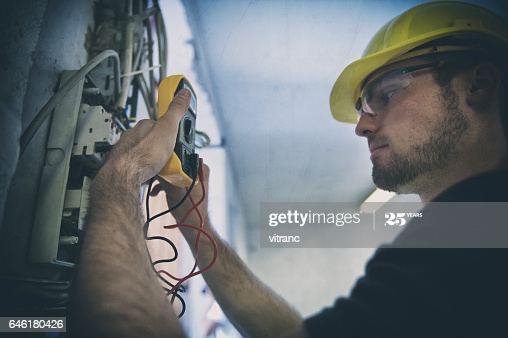Why Starter are Necessary for Starting a D.C. Motor ?
The starters are used for limiting the starting current to safe value of D.C. Motor.
 |
| This photo is credited by Getty images |
When a motor is at rest back emf is zero armature resistance is very small. Therefore, it is dangerous to start the motor of ratings above 5 H.P. directly from the line. The starting current is very high and this heavy current may damage the armature and also cause a flash over across commutator. The avoid such conditions we use starter.
The resistance is introduced in series with armature at the time of starting which is gradually cut out as the motor gains speed and develops back emf which regulate the speed. So the starters are used for limiting the starting current to safe value.
If any one supply wire reaching to above motor is broken, motor may continue to run but, will draw more current.
Similarly it will draw more current when due to any reason low voltage is reaching to the motor terminals. So apart from reducing the starting current at start, suitable arrangements are made for protecting the motor from overloading by disconnecting it automatically from supply.
Type of Starters for DC Motors :
(a) For DC Shunt and Compound Motor.
- Three point starter.
- Four point starter.
(b) For DC series motor.
Parts of DC Machine starter :
DC machines starter are consist by some main parts and this parts are sewing below with details information.
1. Starter resistance :
The resistance is put in series of the armature to protect the motor from heavy rush of current at the time of starting.
The tapping is taken at several places and connected to studs. The resistance is reduced by gradually moving the handle from left to right from one stud to another.
2. Brass Arc :
The brass art is provided below and along the series resistance stud. it is provided to supply full voltage to shunt1 field from the process of starting to running position. It may not be provided in case of series motor starter.
3. Handle :
The handles are hand operated and insulated. It carries a soft iron piece which is directly attached to N.V.R. (No-volt Release) when it reaches running position.
The outer end of handle move on stud connecting resistance in series. When handle rich 'ON' position NVR is energized therefore attracting the handle for as long as the motor is running.
4. No-volt Release (NVC) Coil :
No-volt release coil is a small electromagnet having many turn of fine wire. it is connected in series with the shund field winding and carries small field current.
It keeps the handle in 'ON' position. It in case of failure of supply handle is released to 'OFF' position.
5. Overload Release Coil :
It is an electromagnet coil having small number of turns of thick wire. It is connected in series with the motor and carries the line current.
If there is heavy current flowing that the pre-determined value, it disconnects the motor from the supply and protect against overloading.
This is dummy text. It is not meant to be read. Accordingly, it is difficult to figure out when to end it. But then, this is dummy text. It is not meant to be read. Period.


Please do not enter any spam link in the comment box. ConversionConversion EmoticonEmoticon